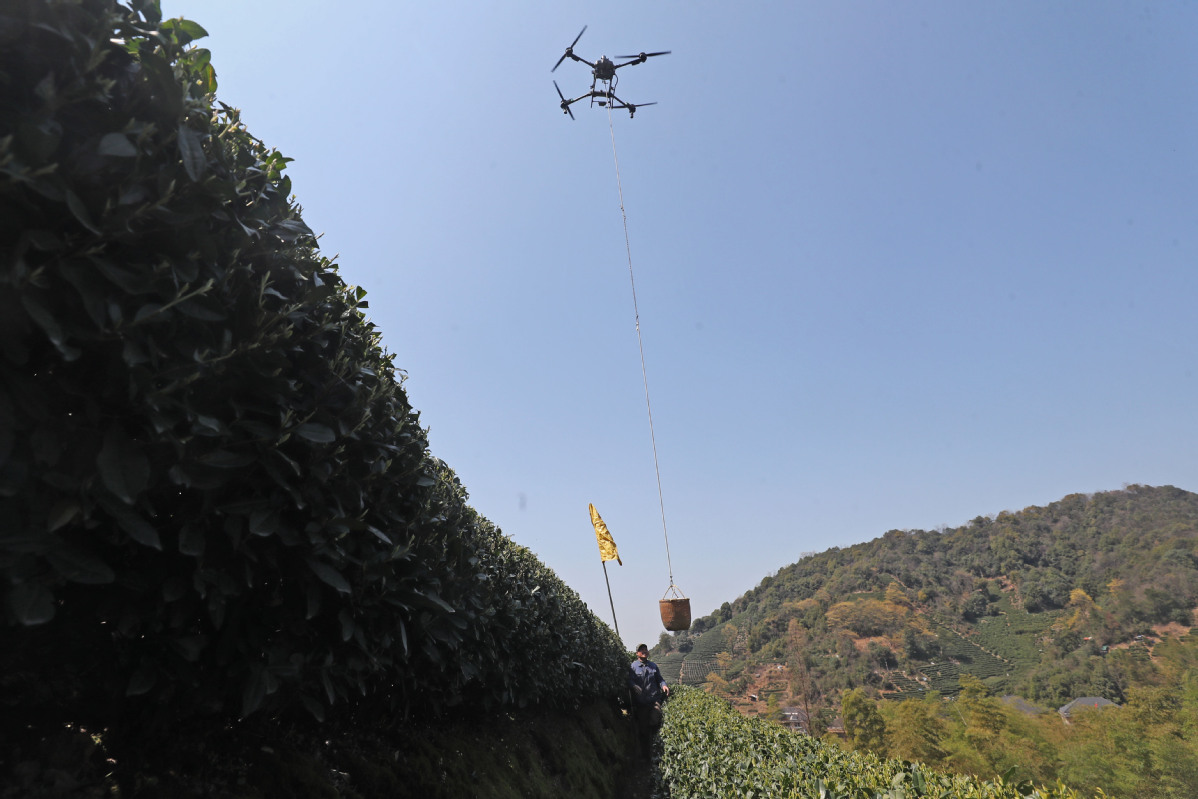Low-altitude economy on cusp of takeoff
Government Work Report says China will encourage industry players to carry out large-scale applications of new technologies, products and scenarios


The low-altitude economy's uptrend has been closely intertwined with support from favorable policies.
The low-altitude economy was first included in the Government Work Report last year, and the sector was regarded as a new growth engine for the economy.
"The industry has experienced leapfrog development. Since early this year, a number of domestic cities have started building infrastructures to help develop the low-altitude economy," said Fu Changyin, marketing director of Shanghai-based Volant Aerotech, which focuses on the research and development of electric vertical takeoff and landing, or eVTOL, aircraft.
"For instance, these cities are planning and designing the takeoff and landing points for eVTOLs, and preparing for the large-scale commercial use of the products," Fu said.
Late last year, the National Development and Reform Commission established a low-altitude department. The department's responsibilities include formulating and organizing the implementation of low-altitude economic growth strategies, making medium and long-term development plans, proposing relevant policy recommendations and coordinating on major issues.
In the past year, various local governments have launched favorable policies to support the growth of the sector. About 30 provincial-level regions have included the low-altitude economy's development in their local government work reports or introduced relevant policies.
The market size of China's low-altitude economy is expected to reach 1.5 trillion yuan ($207.2 billion) this year, and estimated to touch 3.5 trillion yuan by 2035, according to a projection by the Civil Aviation Administration of China.
In particular, Guangzhou and Shenzhen in Guangdong province have introduced a series of measures to support the sector. Over 30 percent of the country's low-altitude industry chain enterprises are located in the province, according to the local government.
In November, Airbus Helicopters, a division of European aircraft manufacturer Airbus and the largest helicopter manufacturer worldwide, launched its new China headquarters in the Guangdong-Macao In-depth Cooperation Zone in Hengqin, Guangdong, indicating the company's strong commitment to the country's general aviation market.
This is the first regional headquarters of a large-scale Fortune 500 company in Hengqin.
Colin James, managing director of Airbus Helicopters in China, said the continuous introduction of favorable new policies related to the development of the low-altitude economy in the Guangdong-Hong Kong-Macao Greater Bay Area indicates the area's huge market size and rising opportunities.
"Now more than ever, it is of critical importance for the low-altitude economy to develop, and all stakeholders to work together on pro-Chinese solutions to promote the low-altitude economy," James said.
In terms of the number of enterprises, Guangdong has been the only province in China that has more than 10,000 enterprises that operate businesses related to low-altitude economy. The number of related enterprises in Guangzhou, the provincial capital, ranks second in the country, according to the local government.
Guangzhou has also demonstrated its strong capabilities in developing eVTOLs. A group of specialized and innovative enterprises with global competitiveness in the low-altitude sector are present in the city.
As a key player in the low-altitude economy, Chinese electric vehicle maker Xpeng Motors' flying car unit Xpeng Aeroht has taken a giant leap into the future of transportation.
The company unveiled its "Land Aircraft Carrier", a car capable of storing an "aircraft" in its "trunk "during the Zhuhai Airshow in November. The air module is an eVTOL structure, built with carbon fiber for lightweight durability.
Currently, the company's flying car manufacturing base is under construction in Guangzhou, and it is expected to be a major mass-production facility for flying cars using a modern assembly line.
With a planned annual capacity of 10,000 units, the factory will focus on producing the air module for the "Land Aircraft Carrier" and is scheduled for mass production in 2026. With each flying car carrying a price tag of about 2 million yuan, the company has received some 4,000 orders.


















